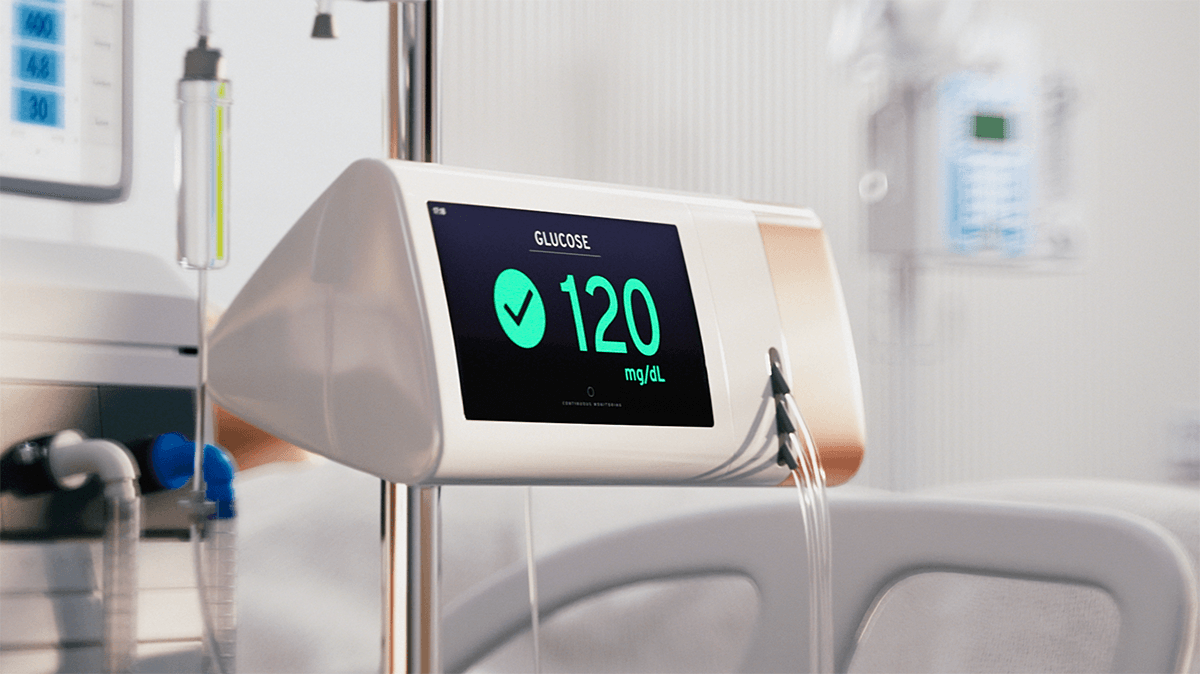In discussions with analysts and potential investors, we occasionally hear the argument that there is no relevant need for the Seraccess Diabetes Care project, “because Novartis (Alcon) and Google (Verily) are on the way to solving the problem.” On the part of Securecell AG, we show the almost insurmountable hurdles on the way to such a non-invasive glucose measurement as well as the advantages of glucose measurement directly in the blood with Seraccess. We are constantly amazed at the belief in technology and the almost blind trust that the involvement of global corporations and tech giants triggers.
Time and again, one hears or reads in the media about groundbreaking new technologies which measure the blood sugar concentration in a non-invasive way in tear fluid, saliva, sweat or through the skin. At this point, it is worth taking a look at the “non-invasive” measurement of blood sugar concentration using two examples.
Non-invasive measurement of blood sugar concentration – the Holy Grail?
In January 2014, the Wall Street Journal reported that Google, in cooperation with Novartis, was developing a “smart” contact lens to measure patients’ blood glucose levels. A wireless chip and a miniaturized glucose sensor are to be embedded between two layers of contact lens material to measure the sugar level in the tear fluid. The enthusiasm at the time for the fact that the very big technology groups are now joining in was the hope that the holy grail of blood glucose measurement would soon be found.(1)
In his book “The Pursuit of Noninvasive Glucose: Hunting the deceitful Turkey” from 2015, John L. Smith describes why this concept is very questionable:(2)
In the many published technical articles describing the relationship between glucose in the tear fluid and glucose in the blood, no relevant correlation could be found that would be sufficient for a blood glucose measurement.
- The daily production of tear fluid is irregular and depends on various factors (physical activity, yawning, emotional reactions). The evaporation of tear fluid is also influenced by various factors such as relative humidity, temperature, movement of ambient air, air conditioning or heating.
- There are concerns that the enzyme glucose oxidase required for sugar measurement and the product of its reaction with sugar, hydrogen peroxide, may have irritating or toxic effects on the sensitive tissue in the eye.
- Attempts to increase the production of tear fluid by mechanical or chemical means have shown that this has changed the sugar concentration.
In view of all the above reasons, it would be a big surprise if a clinically acceptable form of such an intelligent contact lens came onto the market. Recent media reports indicate that this intelligent contact lens “still has a very long way to go”.(3)
On November 16, 2018, Brian Otis, CTO of Verily – the life science division of the parent company Alphabet, which is called “Google Life Sciences” until 2015 – published the following message:(4)
|
A few hours later, Vas Narasimhan – CEO of Novartis – followed with the following publication on LinkedIn:(5)
|
After about five years of joint and intensive research work, two leading companies in their industries worldwide have come to the conclusion that the non-invasive measurement of the glucose level in the tear fluid of diabetes patients fails due to the aforementioned unmanageable challenges.
Another example is Apple’s efforts to equip its Apple Watch with continuous blood glucose monitoring.(6) In 2013/14, Apple engaged several scientists and engineers from the now non-existent C8 Medisensors company, which focused exclusively on the development of a non-invasive CGM system (called “HG-1c”). The HG-1c system used Raman spectroscopy to measure blood sugar concentration. A light impulse was sent through the skin, causing the sugar molecules in the fluid of the subcutaneous tissue to vibrate. An optical sensor was then supposed to detect the light reflected by these sugar molecules, and an analytical device was supposed to analyze the resulting “footprint” and provide a measured value. The most important of several reasons why this technology could not work – not even in an Apple Watch – was the following: The technology is extremely sensitive to sunlight and relies on the darkest possible environment to function.
A former C8 Medisensors employee described it as follows:
The camera sensor had to be shrouded in darkness to function. Raman spectroscopy searches for a very weak signal emitted by the sugar molecules. As a rough analogy: Try to hear the voice of an individual in a noisy room. The sunlight was this kind of noise, the camera sensor was not calibrated against. They tried to use algorithms to use the measurements against these sunlight anomalies, but overlapped some of the anomaly criteria the algorithms were supposed to detect. This made it difficult to verify and test the device.
The latest Apple Watch and CGM system news came in 2017, when it was announced that the Dexcom G5 CGM system could now communicate with the Apple Watch and the readings from the Dexcom G5 system could now be viewed directly on the Apple Watch.(7)
References
- https://www.kqed.org/futureofyou/34158/why-google-is-going-all-in-on-diabetes; letztmals besucht am 01.06.2018.
- http://www.mendosa.com/The%20Pursuit%20of%20Noninvsive%20Glucose,%20Fourth%20Edition.pdf; letztmals besucht am 01.06.2018.
- https://www.theverge.com/2018/1/24/16929874/smart-contact-lens-glucose-blood-sugar-monitor-wireless-tears; letztmals besucht am 01.06.2018.
- https://blog.verily.com/2018/11/update-on-our-smart-lens-program-with.html; letztmals besucht am 18.12.2018.
- https://www.linkedin.com/feed/update/urn:li:activity:6470320611209015296; letztmals besucht am 04.01.2019.
- https://www.networkworld.com/article/2226419/wireless/why-the-iwatch-won-t-measure-glucose-levels.html; letztmals besucht am 03.09.2019.
- https://www.dexcom.com/can-i-view-my-dexcom-g5-mobile-cgm-data-apple-watch; letztmals besucht am 03.09.2019.










